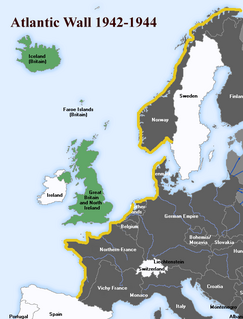 W
WThe Atlantic Wall was an extensive system of coastal defences and fortifications built by Nazi Germany between 1942 and 1944, along the coast of continental Europe and Scandinavia as a defence against an anticipated Allied invasion of Nazi-occupied Europe from the United Kingdom, during World War II. The manning and operation of the Atlantic Wall was administratively overseen by the German Army, with some support from Luftwaffe ground forces. The Kriegsmarine maintained a separate coastal defence network, organised into a number of sea defence zones.
 W
WApart from a Roman Fort, there were very few fortifications in Alderney until the mid 19th century. These were then modified and updated in the mid 20th Century by Germans during the occupation period. Alderney at 8 km2 is now one of the most fortified places in the world.
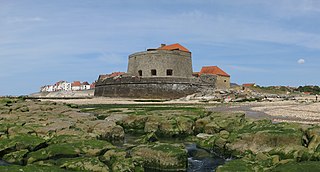 W
WAmbleteuse is a commune in the Pas-de-Calais department in northern France.
 W
WThe Azeville battery was a World War II German artillery battery constructed close to the French village of Azeville in the Manche department in the Normandy region in northwestern France. It formed a part of Germany's Atlantic Wall coastal fortifications and was involved in the Normandy landings and shelled the US landing beach UTAH for three days after D-Day, 6 June 1944. The battery was heavily bombed on 9 June 1944 and fell to the Americans the same day. The site is owned by the local council and one of the battery's gun casemates now houses a museum.
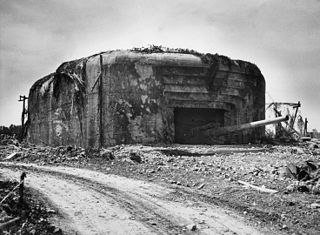 W
WThe Crisbecq Battery was a German World War II artillery battery constructed by the Todt Organization near the French village of Saint-Marcouf in the department of Manche in the north-east of Cotentin peninsula in Normandy. It formed a part of Nazi Germany's Atlantic Wall coastal fortifications. The main armament were three Czech 21 cm Kanone 39 canons, two of which housed in heavily fortified casemates up to 10 feet thick of concrete. The battery, with a range of 27–33 kilometers, could cover the beaches between Saint-Vaast-la-Hougue and Pointe du Hoc.
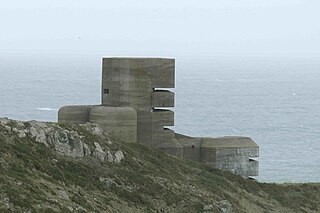 W
WAfter the Wehrmacht occupied the Channel Islands on 30 June 1940, they assessed the existing defences to determine if they would be of use. The Germans found the Islands' fortifications antiquated and woefully inadequate for modern warfare.
 W
WHanstholm fortress was a large coastal fortification, built by Nazi Germany at Hanstholm in north-western Denmark during World War II. The remains of the fortress is now a World War II museum situated in Thy National Park.
 W
WThe Hillman Fortress was a German bunker complex and command post built during the Second World War and located near Colleville-Montgomery in Normandy, France. The bunker complex, designated as Hill 61 and codenamed Hillman by the British, was attacked on 6 June 1944 by the Suffolk Regiment and the fortress finally surrendered the following morning. The delay in taking the bunker complex has been cited as a reason for the Allies not completing their major D-Day objective of taking Caen.
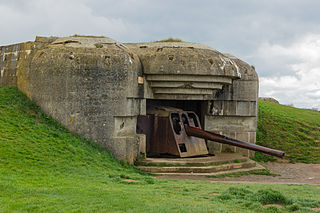 W
WThe Longues-sur-Mer battery was a World War II German artillery battery constructed near the French village of Longues-sur-Mer in Normandy. The battery was sited on a 60 m (200 ft) cliff overlooking the sea and formed a part of Germany's Atlantic Wall coastal fortifications. It was located between the Allied landing beaches of Gold and Omaha and shelled both beaches on D-Day. The battery was captured on June 7 and played no further part in the Normandy campaign.
 W
WThe Maisy Battery is a group of World War II artillery batteries constructed in secret by the German Wehrmacht near the French village of Grandcamp-Maisy in Normandy.
 W
WThe Merville Gun Battery is a decommissioned coastal fortification in Normandy, France, which was built as part of the Germans' Atlantic Wall to defend continental Europe from Allied invasion. It was a particularly heavily fortified position and one of the first places to be attacked by Allied forces during the Normandy Landings commonly known as D-Day. A British force under the command of Terence Otway succeeded in capturing this position, suffering heavy casualties.
 W
WThe Mont Canisy battery was a World War II German artillery battery constructed close to the French village of Benerville-sur-Mer in the Calvados department in the Lower Normandy region. Located on the highest ground in Normandy, the vantage point overlooks the Côte Fleurie. The bunker complex was constructed between 1941 and 1944 to protect the River Seine estuary and the port of Le Havre. It was the largest artillery bunker complex between Cherbourg and Le Havre. The battery is 8 km (5.0 mi) east of the Houlgate battery.
 W
WLa Pointe du Hoc is a promontory with a 100-foot (30 m) cliff overlooking the English Channel on the northwestern coast of Normandy in the Calvados department, France.
 W
WThe Regelbau were a series of standardised bunker designs built in large numbers by the Germans in the Siegfried Line and the Atlantic Wall as part of their defensive fortifications prior to and during the Second World War.
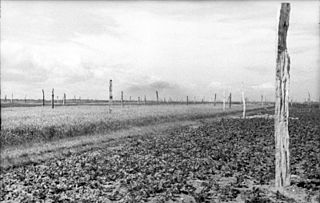 W
WRommel's asparagus were 4-to-5-metre logs which the Axis placed in the fields and meadows of Normandy to cause damage to the expected invasion of Allied military gliders and paratroopers. Also known in German as Holzpfähle, the wooden defenders were placed in early 1944 in coastal areas of France and the Netherlands against airlanding infantry. Rommelspargel took their name from Field Marshal Erwin Rommel, who ordered their design and usage; Rommel himself called the defensive concept Luftlandehindernis.
 W
WThe Todt Battery, also known as Batterie Todt, was a battery of coastal artillery built by the Nazi Germany in World War II, located in the hamlet of Haringzelles, Audinghen, near Cape Gris-Nez, Pas de Calais, France.